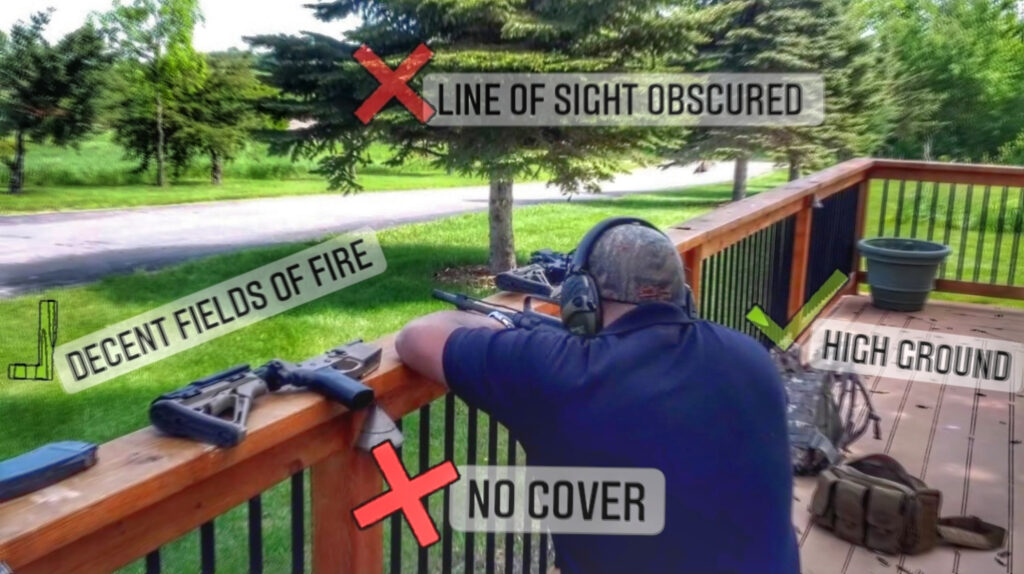When structuring your defensive plans, there are many factors to consider. If you have determined your best defense is to occupy a fortified position, here are some factors to consider.

Firstly, is the structure functionally constructed to be defended? Most civilian structures are not designed and built with fundamental defense in mind. Numerous windows, entryways, and questionable material durability may force you to spend valuable time and resources fortifying. However, if you are set on fortifying an existing structure, routinely review the following considerations:
》Structure durability: Most home construction materials will not withstand impacts from small arms munitions. Thus, they will not provide adequate cover for defense. The simplest method of reinforcing existing structures is through piles/stacks of sandbags. Walls reinforced by sandbags will provide great initial cover from small arms munitions, but sustained barrages will quickly erode any sandbag barriers. Alternatively, consider the use of a bookshelf (fully shelved with books), a fully stocked deep freezer, stacked/filled storage boxes (with overturned tables as backstop).
》Avenues of Approach: routes of travel to and from your position. These can be roads, waterways, and subterranean. As the pathways lead closer to your home consider open trail heads, sidewalks, alleyways, driveways, and rooftops.
》Observation: It is crucial to have the means and ability to obtain visibility of the avenues of approach. You must be able to see approaching threats and their position relative to your fortification. Where this is not possible consider early warning devices such as motion alarms/lights or even dogs.
》Entryways and exits: Doors and windows and their relative position to the avenues of approach.
》Support Access: Position and storage of water/food/munitions/supplies. The best positioning can be accessed from within the fortification with minimal exposure/access to avenues of approach.
》Fighting positions: Primary and alternate. These are positions of cover/concealment from which you can engage assaulting threats. Fighting positions should have visibility of avenues of approach and be built into the structure’s fortifications. Individuals should be able to access fighting positions from within fortification with minimal exposure to avenues of approach.
》Evacuation plan: Always have an “out.” Given time and material, all fortifications can and will be overtaken. Planning and fortification should be done with potential evacuation in mind. Ensure you have a plan and multiple routes/methods to abandon your position if the need arises. During an active defense, time and attention must always be afforded to ensuring your evac routes are secure, open, and viable. Keep in mind that a wall can always be breached to create an evacuation route.
》Final Defensive Line: A predetermined event or occurrence that dictates when to initiate an evacuation plan. An example would be a threat crossing a defensive perimeter thus removing a fighting position’s ability to engage.
Adhering to these core defensive concepts, will help to ensure you develop and deploy a successful static defense. Adapt these considerations to fit your scenario and environment. It may seem obscure to imagine such a need for this time of static defense planning but most emergencies happen suddenly, if you could foretell their emergence then it wouldn’t be a crisis as we would take preventive actions to avoid it in the first place. Still there are quite a number of indicators that have already presented themselves in our current climate that suggest the need to make such defensive plans. Point being, it’s better to prepare now than react later.
This article was originally written by the Grayman Briefing. Stay in the know, sign up for Intel and Situational Awareness alerts pushed to your phone on emerging threats and preparedness warnings. Click HERE to subscribe to the Grayman Briefing.
